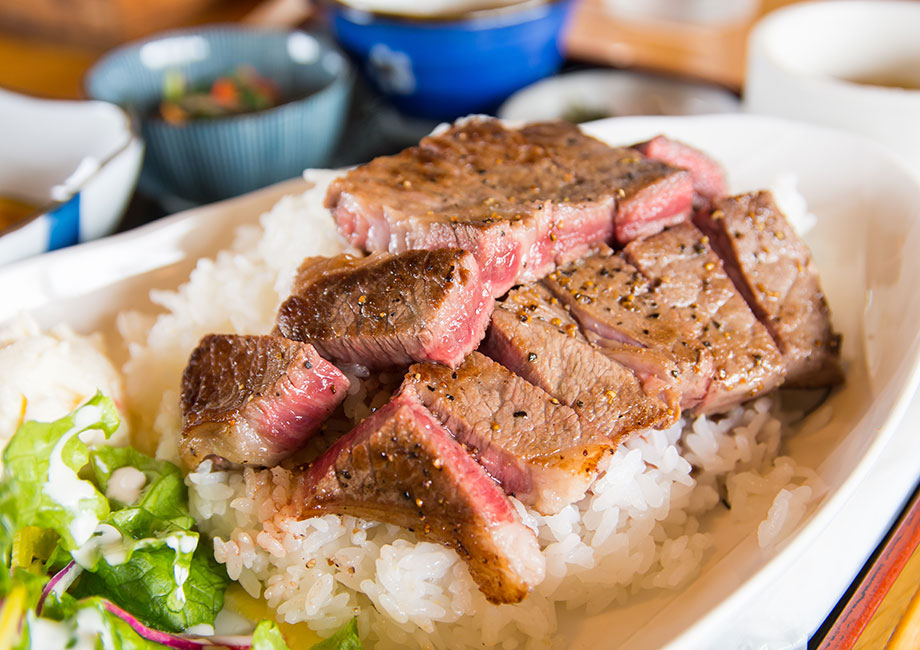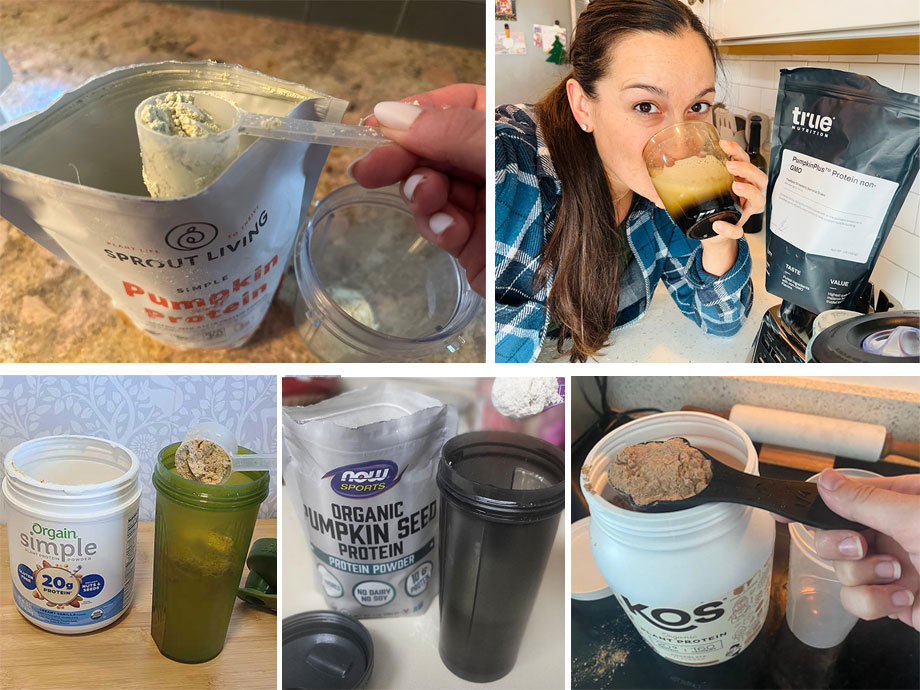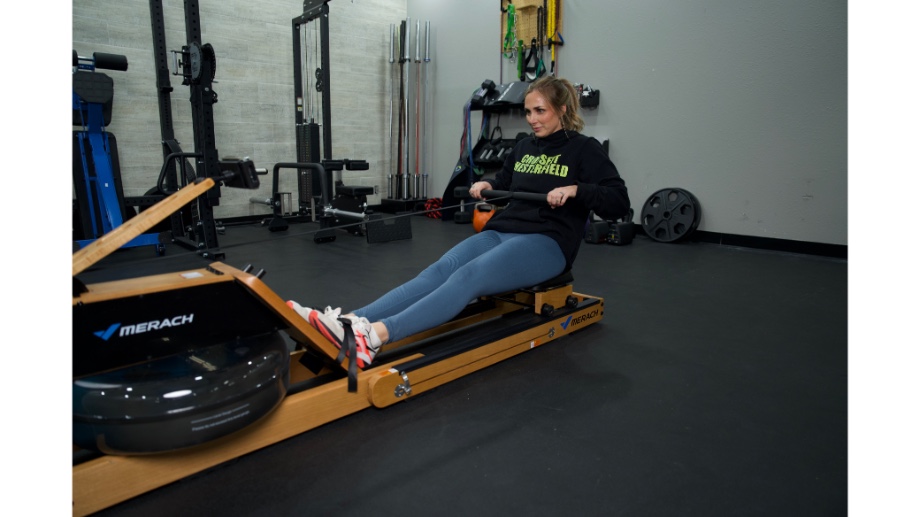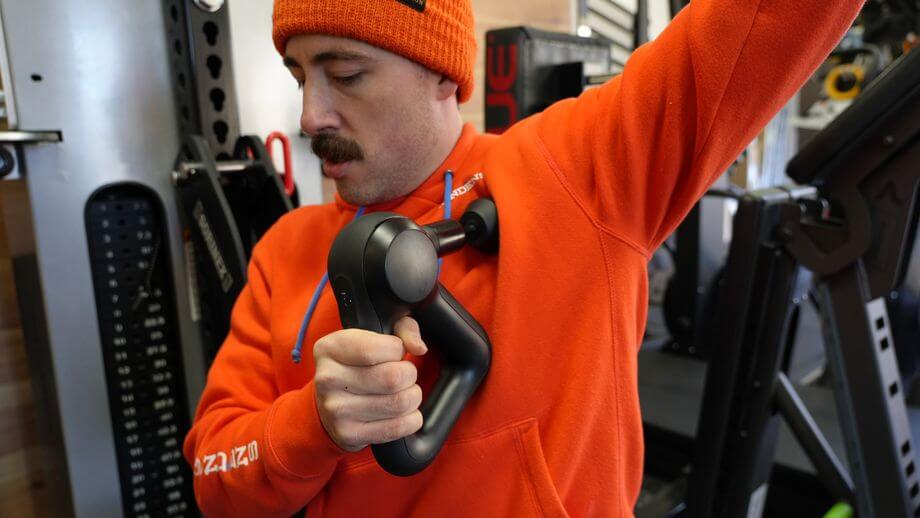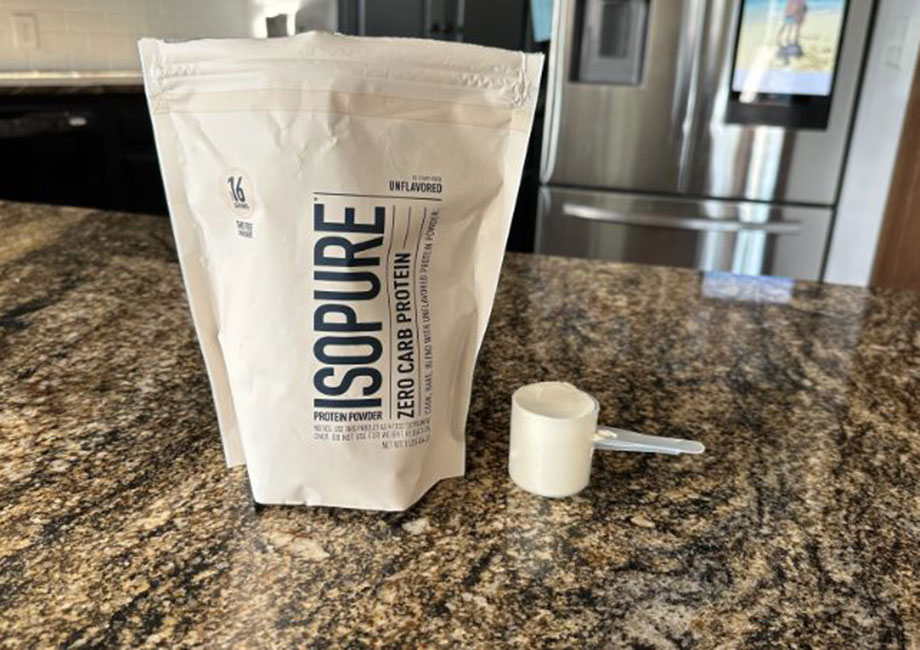As someone who lives for a play on words, I admittedly had a clever intro typed out and ready to go. But that was quickly deleted after noticing much of the top-ranked Vertical Diet content lacked the depth and references I was vertically climbing for.
I will also admit: my views on the Vertical Diet were reshaped as I dug vertically into countless Stan Efferding podcasts and videos, traded a few Hamiltons for The Vertical Diet e-Cookbook1, and hit the jackpot with a copy of “The Vertical Diet & Peak Performance 3.0” e-book2.
Because we at GGR strive to provide accurate information without monopolizing your precious time, what follows is a distilled version of my hours of listening, watching, and reviewing the 200+ page e-book.
RELATED: High-Protein Diet Side Effects
So, if the Vertical Diet is on your horizon, join me as I unveil the often-overlooked nuances and help you decide if it’s worth your while.
Medical disclaimer: This article is intended for educational and informational purposes only. It is not intended as a substitute for medical advice. For health advice, contact a licensed healthcare provider.
What is the Vertical Diet?
The Vertical Diet2 is a nutritional framework developed to improve body composition for optimal health and athletic performance. It’s favored by leaders in the fitness industry—including CrossFit Games Champions and some of the World’s Strongest Men—but anyone can easily adopt the Vertical Diet.
The diet program aims to optimize gut health, enhance nutrient absorption, correct nutrient deficiencies, and balance hormones. It also seeks to improve energy, stamina, endurance, recovery, and overall health through sustainable lifestyle changes.
Overall, the Vertical Diet is designed to be simple, sensible, and sustainable because the best mass gain or the best weight loss programs are the ones you’ll adhere to. To quote Stan Efferding, “Compliance is the science.” #Ditto
Who is Stan Efferding?
As an IFBB Pro Bodybuilder and World Record Powerlifter, Stan’s bio is impressive and perhaps a tad intimidating. Dubbed the World’s Strongest Bodybuilder and among only 10 globally to total 2,300+ pounds in competition, Stan not only lifts rhino-equivalent weights but also masters bodybuilder nutrition.
With over 25 years of experience training athletes and as a Certified Strength and Conditioning Specialist (CSCS), Stan conducts sports seminars, writes for top fitness magazines, and has founded three multi-million dollar startups.
Along with co-author Damon McCune, an exercise physiologist and registered dietitian nutritionist, Stan created “The Vertical Diet” and co-founded “The Vertical Diet Meal Prep.”

What Foods Can You Eat on the Vertical Diet?
While sources often contrast the Vertical Diet with “horizontal” diets promoting food variety, its first component is surprisingly called the “Horizontal Food Foundation.” The “Vertical Food Construction” is a smaller portion, including a few select foods, two of which are within the Horizontal Food Foundation. Make sense?
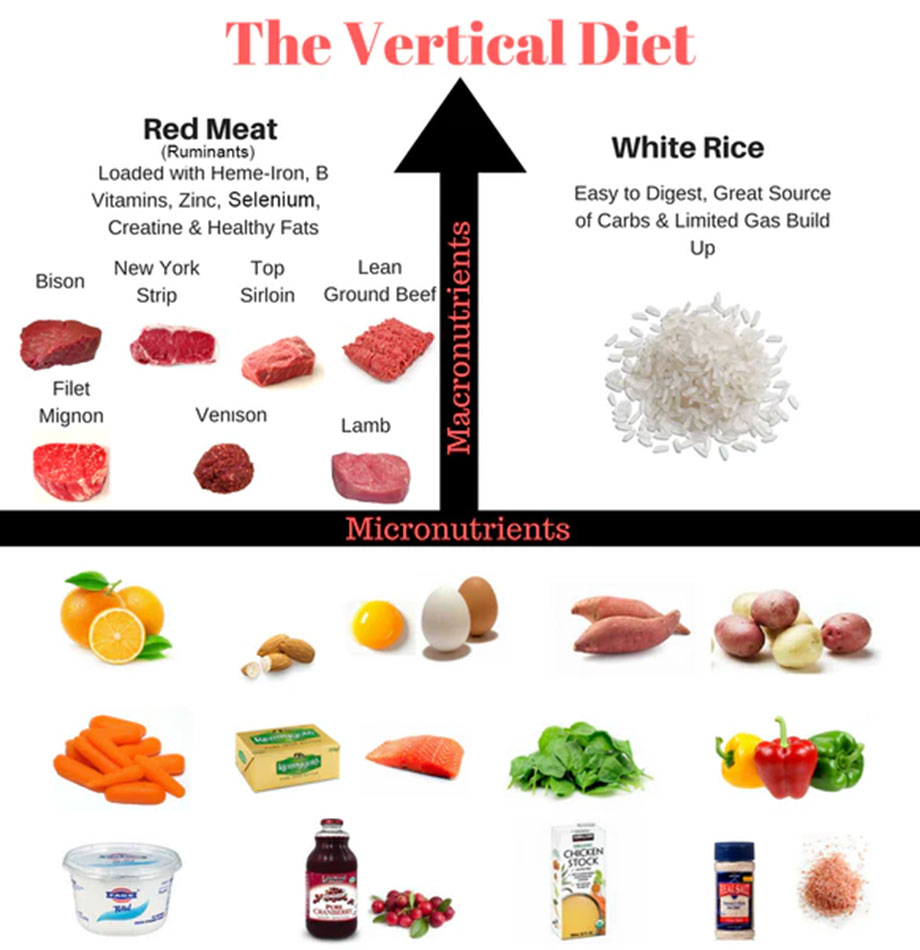
Horizontal Food Foundation
Under the “Horizontal Food Foundation,” these foods aim to fulfill micronutrient needs, aid digestion, and boost hormone production2:
- Ruminant red meats: Cattle, bison, New York strip, top sirloin, lean ground beef, filet mignon, venison, lamb (grass-fed and finished preferred)
- Fatty fish: salmon, trout, sardines, anchovies
- Chicken stock, bone broth
- Low-FODMAP vegetables: Carrots (raw), potatoes, sweet potatoes (½ cup), bell peppers, squash, eggplant, celery, cucumber, tomatoes, spinach (cooked*)
- Low-FODMAP fruits: Oranges, mandarines, lemons, limes, blueberries, strawberries, honeydew, cantaloupe, kiwi, pineapple
- Dairy source:* Milk, hard cheese, full-fat plain Greek yogurt (optimal for probiotics/gut health)
- Eggs: Whole eggs and whites*
- Almonds*
- Salt: To taste and pre- and post-workout
- Cranberry juice
- Sourdough bread without bromide*
*Consume daily unless allergic or intolerant, as per the Vertical Diet.
RELATED: High-Protein Foods
Vertical Food Construction
Here’s where the “vertical” component comes in. The rest of the diet is built vertically using the following foods, especially for those requiring a higher number of calories:2
- Red meat, as mentioned in “Horizontal Food Foundation”
- White rice due to its ease of digestion; adding dextrose is also recommended to help stimulate saliva production and ease consumption with high intakes.
- Salt to replenish electrolytes, especially for training athletes
RELATED: Best Electrolyte Powder
What Foods Should You Avoid on the Vertical Diet?
The Vertical Diet guide advises consumers to:
Be cautious with high-FODMAP foods:
- Wheat, grains, legumes (like lentils), garlic, onions, and certain vegetables and fruits
Avoid:
- High omega-6 and processed vegetable oils: corn, canola, cottonseed, safflower, sunflower, soybean, and grape-seed oils
- Sugar alcohols: mannitol, sorbitol, xylitol
https://stanefferding.com/products/vertical-diet-peak-performance-detailed-program-notes
What Are FODMAP Foods?
A nifty acronym for Fermentable Oligo-, Di-, Monosaccharides, And Polyols, FODMAP3 encompasses a group of short-chain carbohydrates resistant to digestion. Common high-FODMAP foods4 include:
Monosaccharide:
- Fructose (primarily found in fruits): Apples, high-fructose corn syrup, mango, pears, watermelon
Disaccharide:
- Lactose (found in dairy): Including milk, cheeses, yogurt
RELATED: Dairy-Free Meal Delivery
Oligosaccharides:
- Fructans: Onion, garlic, grains
- Galacto-oligosaccharides (GOS): Legumes, pistachios, cashews
Polyols:
- Additives and sugar alcohols: Isomalt, sorbitol, maltitol, mannitol
- Fruits: Apples, apricots, blackberries, nectarine, peach
- Veggies: Cauliflower, mushrooms
Adopting a FODMAP diet is complex, and its benefits and risks individually vary—more on these details next!
Vertical Diet Benefits
Can the Vertical Diet take your health to new heights? Let’s explore the potential benefits.
Emphasizes Nutrient-Dense Foods and Balanced Meals
With countless weird diets out there, the Vertical Diet’s emphasis on whole foods and a balanced intake of all three macronutrients is a welcomed change. It also highlights essential nutrients in foods and food groups—such as omega-3s in fatty fish and potassium in potatoes—that can help consumers recognize and appreciate food offers more than calories.
Caters to Many Dietary Needs and Preferences
The Vertical Diet is adaptable for various diets, including low-carb, high-carb, and intermittent fasting. I admit I initially doubted its suitability for vegetarians and vegans, although the guide confirms its use by these groups.
https://stanefferding.com/products/vertical-diet-peak-performance-detailed-program-notes
Supports Various Body Composition Goals
The Vertical Diet may help you meet your body composition goals with the help of its Quick Start Guide:
- Determine your basal metabolic rate (BMR) using their calculator.
- Decide on your goal—whether to lose weight, maintain your weight, or gain muscle mass—to help identify caloric needs.
- Calculate your macros.
- Use the “My Vertical Tracker App” to plan your diet with Vertical foods.
The Vertical Diet guide also offers sample menus (see below), ranging from lower to high-calorie meals based on your dietary needs.
Promotes Digestive Health
The Vertical Diet prioritizes supporting the digestive system and why it cautions against high-FODMAP vegetables, fruits, and other foods. While some people easily tolerate these foods, consuming them in excess could cause unpleasant symptoms, especially for those requiring a high-calorie diet to support training and weight gain goals.
The Vertical Diet also encourages thoroughly chewing food and outlines preparation tips—like soaking oats and beans—to reduce the risk of digestive disturbances and improve digestion.
Promotes Lifestyle Changes
Eating habits are just one piece of the puzzle, so it’s refreshing that The Vertical Diet encourages fostering other lifestyle changes—such as sleep, physical activity, and regular blood work—to enhance health and wellness.
Stan Efferding promotes simple daily habits, like taking a few 10-minute walks, to make physical activity more approachable. As he mentions and recent research5 confirms, even small bouts of movement can lead to big benefits—like significantly reducing your risk of heart disease, cancer, and premature death.
RELATED: Best Heart Healthy Meal Delivery
Benefits of the Vertical Diet E-book
Suppose you’re up to spending the flat fee of $100 on the actively updated e-book. In that case, you’ll gain endless access to the 200+ pages of supplement recommendations, training protocols, sleep tips, blood work tests, structured guidance, and more.
The e-book also refers to countless references and expert resources in various fields, such as exercise, nutrition, and sleep.
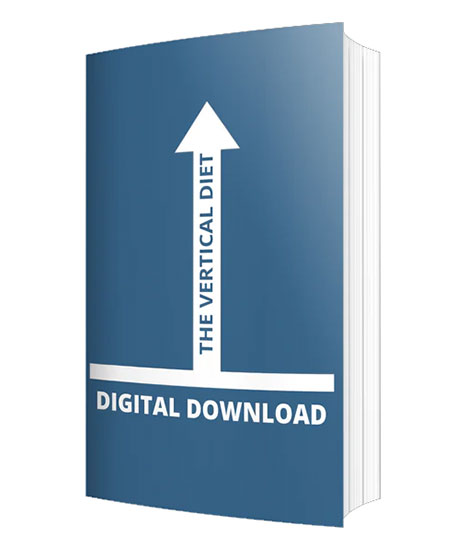
Vertical Diet Drawbacks
Before getting into The Vertical Diet’s actual meat, I had several initial reservations. However, after examining the details, hear me about its major drawbacks (particularly the last).
Red Meat Intake Concerns
To address the elephant on the page, there’s significant debate over the health effects of red meat consumption—but I’m purely discussing unprocessed red meats here, as processed ones like hot dogs should be very limited in the diet.
Some studies indicate that red meat might be linked to health risks, including heart disease6, while other research in the American Journal of Clinical Nutrition7 finds no adverse effects on blood lipids. A challenge with many of these studies is determining the influence of other potential risk factors, like low fiber intake, physical inactivity, or smoking.
While I’m not advocating for the consumption of red meat, I believe the decision to eat it—and in what quantities—should be personal and guided by your healthcare team.
Dietary Fiber Gaps
Encouraging daily intake of fruits and veggies, The Vertical Diet naturally provides fiber. However, this hardly gets a mention or attention in the e-book, yet it presents an opportunity to balance the worry of red meat intake.
Fiber protects from chronic diseases (like heart disease and cancer), supports digestive health, and manages weight, to name just a few of fiber’s health benefits8. Some FODMAPs are also prebiotics that nourish probiotics (helpful gut bacteria), so restricting them may negatively impact the gastrointestinal microbiota.
RELATED: Best Prebiotics / Best Probiotics
Cost (Potentially)
Most sources claim that The Vertical Diet is costly, especially if purchasing its ready-prepared meals. While prioritizing high-quality foods often comes with higher costs, The Vertical Diet suggests their recommended carbohydrate sources—such as white rice and potatoes—are inexpensive and can help offset the cost of proteins.
RELATED: Prepared Meal Delivery
The guide also offers a section on “The Vertical Diet on a Budget,” guiding consumers to budget effectively. It’s worth noting, however, that the guide itself costs $100. Ouch.
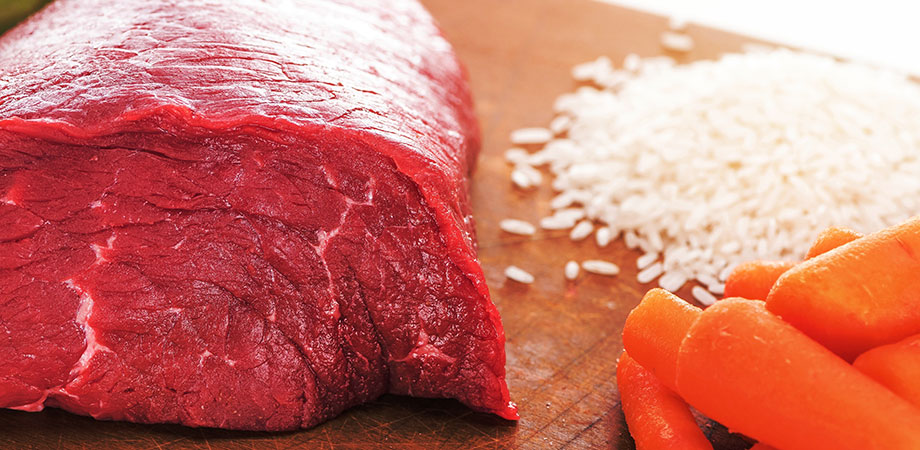
Busting Common Myths about the Vertical Diet
I deeply respect that years of knowledge and experience hold immense value, but the $100 price tag of the e-book may have led to sources sharing misinformation. Contrary to popular belief—and even my initial impression—I’d like to share a few common oversights:
- While white rice appears to make up the bulk of the Vertical Diet, Stan Efferding encourages prioritizing nutrient-dense fruits and potatoes first, then filling calories with rice as needed.
- Vegetarians and vegans can successfully use and adapt The Vertical Diet.
- The Vertical Diet can be affordable.
- You actually can eat oats and drink coffee on The Vertical Diet with a few caveats shared in the e-book.
I share these details not to contradict anyone but to ensure consumers have the most accurate information to make informed decisions.
Vertical Diet vs. Paleo
Also popular among the fitness community, especially the CrossFit community, how does the Paleo diet stack up to The Vertical Diet? The Paleo diet9—known as the Paleolithic, caveman, and Stone-Age diet—is based on wild foods frequently consumed during the Paleolithic era (about 2.6 million years ago!).
The Paleo diet primarily emphasizes fruits, vegetables, meat, fish, nuts, and eggs. Grains, pulses (such as beans and legumes), dairy products, sugar, salt, and processed foods are excluded, while the inclusion of alcohol and potatoes is often debated. Overall, the Paleo diet is rich in fats (especially polyunsaturated fatty acids known as PUFAs) and proteins and low in carbohydrates.
RELATED: High-Protein, Low-Carb Foods
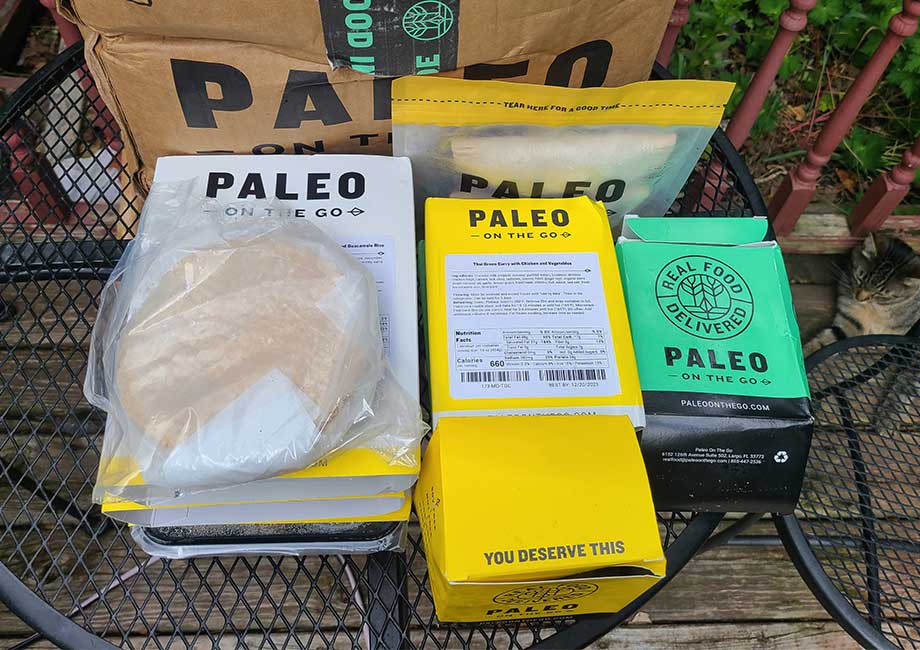
Although The Vertical Diet and Paleo diet share similarities, there are clear differences between the eating patterns. Such distinctions help guide prospective followers on which diet is best for them (or perhaps neither).
Key Similarities
- Both focus on whole, nutrient-dense foods
- Both encourage meat, fatty fish, fruits, vegetables, and eggs
- Both discourage legumes, added sugar, and processed foods
- Both include all three macronutrients (although Vertical Diet is richer in carbohydrates)
Main Differences
- While the Vertical Diet encourages white rice and other carb-rich sources, the Paleo diet is limited in carbs beyond fruits and vegetables.
- The Paleo diet excludes dairy, the Vertical Diet encourages dairy products in the absence of an allergy or intolerance.
- The Vertical Diet offers easily digestible carb sources to help increase calorie intake and reduce the risk of digestive distress. Conversely, consuming the satiating and fibrous foods on the Paleo diet may lead to belly bloat.
- Although both diets include fruits and vegetables, only The Vertical Diet emphasizes low-FODMAP varieties.
- The Vertical Diet encourages salting foods, especially for high-performing athletes, whereas the Paleo diet discourages added salt.
RELATED: Best Greens Powder for Bloating
Is The Vertical Diet or Paleo Diet Better?
Both eating patterns can benefit overall health and well-being since they prioritize nutrient-dense foods and eliminate ultra-processed ones. However, while both discourage legumes, The Vertical Diet offers a more liberal approach by allowing white rice, potatoes, some grains (with noted caveats in the e-book), and dairy.
Of course, dietary needs and preferences are individualized. But from a sports nutrition standpoint, the greater carb density and variety offered by the Vertical Diet might better fuel athletic performance. The Vertical Diet may also have the upper hand for those trying to put on size while maintaining a balanced diet and minimizing digestive distress.
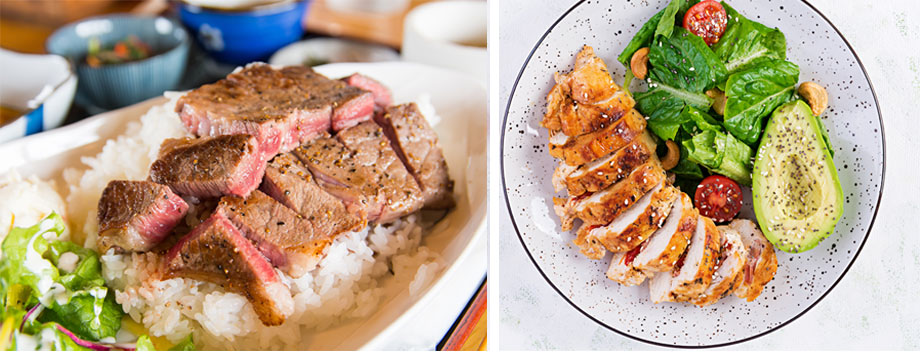
The bottom line echoes Stan Efferding’s diet philosophy: “Compliance is the science.” Long-term success is the byproduct of sticking to a diet that you enjoy and satisfies your dietary needs.
The best part? You can “try on” various diets to see which suits you best. So, if you’re curious about the Vertical Diet, give it a go! If Paleo seems more your style, consider checking out the best Paleo meal delivery services. And if neither appeals to you, that’s perfectly fine, too!
Sample Vertical Diet Meal Plan
All meal plans share similar foundations, whether for mass gain or weight loss. For instance, the mass gain plan below is comparable to the one formulated for weight loss, but with heftier portions and a larger fourth meal.
Sample Meal Plan: For Mass Gains
Meal 1
- 2 eggs
- 4 egg whites
- 1 slice cheddar cheese
- Spinach/peppers
- 1 pat of ghee, tallow, or butter
- 2 cups rice or potato
- 3 baby carrots
- 2 oz cranberry juice
- 10 almonds
Meal 2
- 5 oz steak, salmon, or bison
- 2 cups rice
- Peppers
- 2 cups spinach
- 4 oz bone broth
- 1 small orange or 4 oz OJ
Meal 3
- 5 oz steak, salmon, or bison
- 2 cups rice or potato
- 2 cups spinach
- 4 oz orange juice
Meal 4
- 5 oz steak, salmon, or bison
- 1.5 cups rice or potato
- ½ cup 2% yogurt
- 3 baby carrots
Vertical Diet: Final Thoughts
The Vertical Diet aims to optimize health, wellness, and athletic performance by prioritizing whole foods and balanced meals. While red meat and white rice form the vertical axis, the horizontal axis—made up of low-FODMAP fruits, vegetables, fatty fish, eggs, dairy, and more—provides the foundation.
The foods allowed in The Vertical Diet are central to its guiding principles, but its emphasis on sleep, exercise, and other lifestyle behaviors deserve equal attention. The Vertical Diet might be worth exploring if you’re seeking (and can afford) a structured eating plan like this—whether you’re aiming to lose, maintain, or gain weight—combined with holistic health guidance.
Vertical Diet: FAQs
Is vertical diet healthy?
The Vertical Diet can be a healthy solution since it emphasizes whole foods and balanced meals. However, consulting a nutrition expert for individual guidance is always recommended.
How much protein do you need on a vertical diet?
The Vertical Diet suggests protein intake varies based on your goals:
– Weight loss: 1.2 grams of protein per pound of body weight (g/lb)
– Maintenance: 1.0 g/lb
– Weight gain: 0.8g/lb
The daily protein targets should be divided across 3-5 meals, each providing 20-40 grams of protein.2
Can you drink coffee on vertical diet?
The Vertical Diet positions that you can drink a little coffee without added calories provided you mitigate any effects of dehydration and the caffeine doesn’t disrupt your sleep.2
What are the disadvantages of the vertical diet?
While the disadvantages of the Vertical Diet may vary individually, the primary concerns relate to excessive red meat intake, limited dietary fiber and variety, and the potential higher cost of following it.
These statements have not been evaluated by the Food and Drug Administration. This product is not intended to diagnose, treat, cure, or prevent any diseases.
References
- Efferding S, Molesworth D. The Vertical Diet Cookbook. https://stanefferding.com/collections/e-books/products/vertical-diet-cook-book
- McCune D, Efferding S. The Vertical Diet and Peak Performance 3. 0.; 2021. https://stanefferding.com/products/vertical-diet-peak-performance-detailed-program-notes
- Lomer MCE. The low FODMAP diet in clinical practice: where are we and what are the long-term considerations? Proc Nutr Soc. 2023 Jul 7:1-11. doi: 10.1017/S0029665123003579. Epub ahead of print. PMID: 37415490.
- Scarlata K. Low FODMAP Diet: What Your Patients Need to Know. Am J Gastroenterol. 2019 Feb;114(2):189-191. doi: 10.1038/s41395-018-0274-6. PMID: 30356177.
- Ahmadi MN, Clare PJ, Katzmarzyk PT, et al. Vigorous physical activity, incident heart disease, and cancer: how little is enough? Eur Heart J. 2022 Dec 7;43(46):4801-4814. doi: 10.1093/eurheartj/ehac572. PMID: 36302460; PMCID: PMC9726449.
- Lichtenstein AH, Appel LJ, Vadiveloo M, et al. 2021 Dietary Guidance to Improve Cardiovascular Health: A Scientific Statement From the American Heart Association. Circulation. 2021 Dec 7;144(23):e472-e487. doi: 10.1161/CIR.0000000000001031. Epub 2021 Nov 2. PMID: 34724806.
- O’Connor LE, Kim JE, Campbell WW. Total red meat intake of ≥0.5 servings/d does not negatively influence cardiovascular disease risk factors: a systemically searched meta-analysis of randomized controlled trials. Am J Clin Nutr. 2017;105(1):57-69. doi:10.3945/ajcn.116.142521
- Anderson JW, Baird P, Davis RH Jr, Ferreri S, Knudtson M, Koraym A, Waters V, Williams CL. Health benefits of dietary fiber. Nutr Rev. 2009 Apr;67(4):188-205. doi: 10.1111/j.1753-4887.2009.00189.x. PMID: 19335713.
- Cambeses-Franco C, González-García S, Feijoo G, Moreira MT. Is the Paleo diet safe for health and the environment?Sci Total Environ. 2021;781(146717):146717. doi:https://doi.org/10.1016/j.scitotenv.2021.146717


